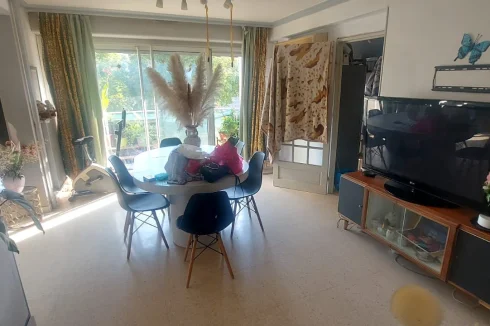Emptying Your Septic Tank
Tuesday 05 July 2016
What is the regulatory framework governing emptying and maintenance of your septic tank in France?
Around 5 million households in France use a fosse septique for the disposal sewerage waste and 'grey' water from sinks and bathrooms.
The regulations governing the installation and standards of septic tank systems have been substantially tightened in recent years, with a system of authorisation and periodic inspection now in place.
However, somewhat surprisingly, the regulatory framework says very little about the obligations on owners for the maintenance of their septic tank system.
It is commonly assumed that it is necessary to empty your septic tank every 4 years, a requirement that stems from a law passed in 1996.
However, this law was superceded in 2009 by a general requirement on owners to ensure the satisfactory performance of their septic tank system, but with no stipulation regarding the frequency of emptying the tank.
The Arrêté du 7 septembre 2009 governing the technical requirements for the installation and maintenance of septic tanks system simply states that 'les installations d'assainissement non collectif sont entretenues régulièrement par le propriétaire de l'immeuble.'
So the frequency with which a householder needs to empty the tank depends on the how they use it and whether it is operating satisfactorily. The installer/manufacturer may also give advice on the issue.
The regulation goes on to state that the level of sludge in the tank must not exceed 50% of the volume of the tank.
Provided your septic tank is of the correct size for your household, and it is operating satisfactorily, it would be rare for it to accumulate this level of sludge; the micro-bacterial process should normally ensure that the solid matter is broken down and the amount to sludge in the tank kept below this level.
The level of the sludge in the tank may be seen from a visual inspection, but if you remain unsure, one way of finding out is to simply put a stick in the tank to establish the sludge line, which you can then measure against total liquid volume in the tank.
Some septic tanks can operate satisfactorily for many years without being emptied and if the waste is backing up this may merely be due to a blockage in the pipework rather than a full tank.
The regulations governing the installation and standards of septic tank systems have been substantially tightened in recent years, with a system of authorisation and periodic inspection now in place.
However, somewhat surprisingly, the regulatory framework says very little about the obligations on owners for the maintenance of their septic tank system.
It is commonly assumed that it is necessary to empty your septic tank every 4 years, a requirement that stems from a law passed in 1996.
However, this law was superceded in 2009 by a general requirement on owners to ensure the satisfactory performance of their septic tank system, but with no stipulation regarding the frequency of emptying the tank.
The Arrêté du 7 septembre 2009 governing the technical requirements for the installation and maintenance of septic tanks system simply states that 'les installations d'assainissement non collectif sont entretenues régulièrement par le propriétaire de l'immeuble.'
So the frequency with which a householder needs to empty the tank depends on the how they use it and whether it is operating satisfactorily. The installer/manufacturer may also give advice on the issue.
The regulation goes on to state that the level of sludge in the tank must not exceed 50% of the volume of the tank.
Provided your septic tank is of the correct size for your household, and it is operating satisfactorily, it would be rare for it to accumulate this level of sludge; the micro-bacterial process should normally ensure that the solid matter is broken down and the amount to sludge in the tank kept below this level.
The level of the sludge in the tank may be seen from a visual inspection, but if you remain unsure, one way of finding out is to simply put a stick in the tank to establish the sludge line, which you can then measure against total liquid volume in the tank.
Some septic tanks can operate satisfactorily for many years without being emptied and if the waste is backing up this may merely be due to a blockage in the pipework rather than a full tank.
Emptying the Tank
If your tank does need to be emptied then the regulations stipulate that only those professionals who have been authorised (agréés) by the prefecture are permitted to undertake the task. This is due, in the main, to ensure satisfactory disposal of the waste.
The 'vidange' itself should normally take between one and one half hours.
You should ensure that all compartments of the septic tank are emptied, the whole system flushed through with clean water, and the tank itself refilled with water to the correct level.
The cost of the operation will depend on the size of the system, but averages between €150 and €250.
The charge might well be higher if access is difficult or you live in an isolated area.
Request a certificat de vidange on completion of the work. The document should state, amongst other things, the accreditation number of the company, the amount of waste removed and its destination. The certificate could be of use in the event of an inspection of your system by the authorities.
You may well find that your local Service Public de l'assainissement non collectif (SPANC), who operate through the auspices of your local council or inter-communal body, have negotiated rates for householders with one or more local firms.
The 'vidange' itself should normally take between one and one half hours.
You should ensure that all compartments of the septic tank are emptied, the whole system flushed through with clean water, and the tank itself refilled with water to the correct level.
The cost of the operation will depend on the size of the system, but averages between €150 and €250.
The charge might well be higher if access is difficult or you live in an isolated area.
Request a certificat de vidange on completion of the work. The document should state, amongst other things, the accreditation number of the company, the amount of waste removed and its destination. The certificate could be of use in the event of an inspection of your system by the authorities.
You may well find that your local Service Public de l'assainissement non collectif (SPANC), who operate through the auspices of your local council or inter-communal body, have negotiated rates for householders with one or more local firms.
Related Reading:
Next Article: Farming Leases
Thank you for showing an interest in our News section.
Our News section is no longer being published although our catalogue of articles remains in place.
If you found our News useful, please have a look at France Insider, our subscription based News service with in-depth analysis, or our authoritative Guides to France.
If you require advice and assistance with the purchase of French property and moving to France, then take a look at the France Insider Property Clinic.





